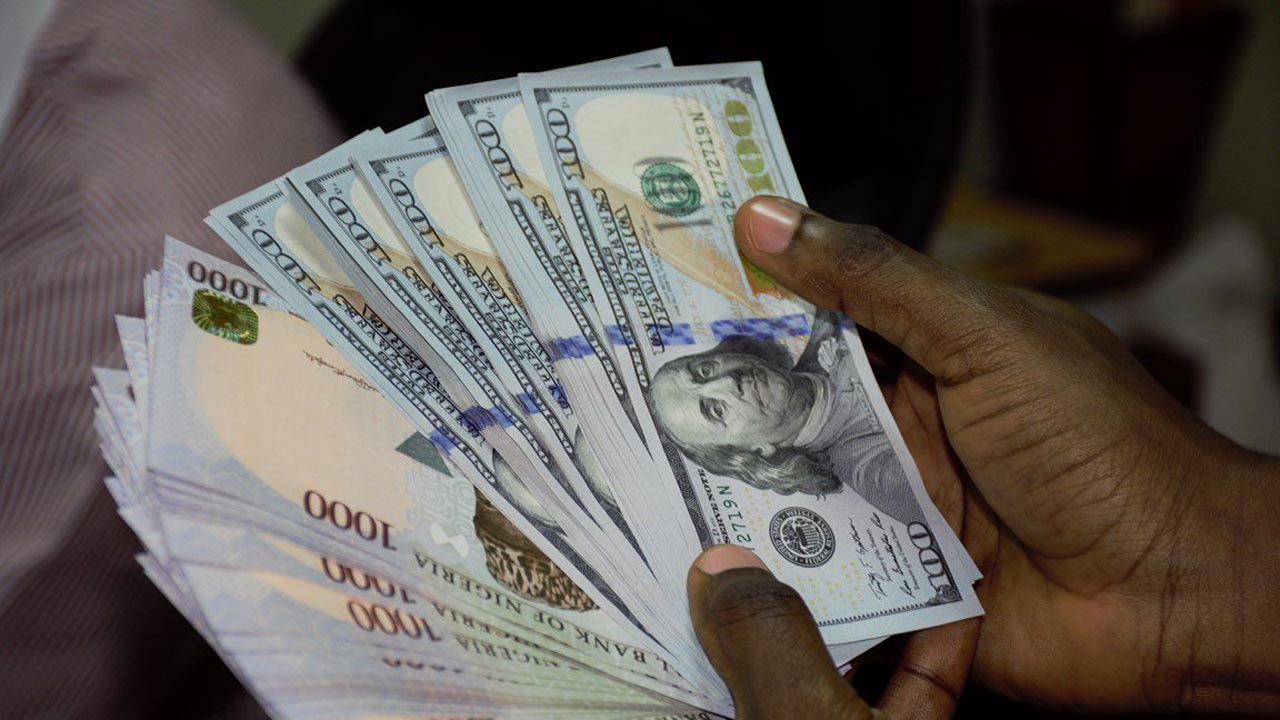
NAIRA LOSSES TO DOLLAR
Naira losses to dollar as investors repatriate dividend
Nigeria’s naira eased to 362 to the dollar for investors this week as funds repatriate dividends abroad following the end of the earnings season and as forward currency contracts mature amid tight dollar liquidity, traders said.
The naira traded at 360 for over six months after the central bank in April 2017 liberalised the currency for investors in the wake of a currency crisis brought on by low oil prices that also slashed government revenues.
Traders said the currency started to weaken last week as demand piled up especially from companies seeking to repatriate dividends and investors booking profits from local assets.
Sunday Telegraph also learnt that importers buying goods from abroad were also exerting pressure on the naira.
This came as the gap between lenders’ bids to buy and sell the naira to investors is widening due to a tight supply of dollars in the market, traders said, suggesting the currency is coming under international pressure even as government finances improve.
Some banks are seeking to sell the naira at 365 per dollar to investors, while others offered to buy at 359. Banks were trading between themselves in the middle at 362 per dollar, traders said. The currency bid-offer spread has been much tighter in the past, usually ranging between 359 and 360 naira.
The naira had been relatively stable at 360 to the dollar for months after the central bank in April 2017 liberalised trade in the currency for investors as it emerged from a currency crisis and recession brought on by low oil prices that also slashed government revenues.
The central bank then introduced a multiple exchange rate regime to closely manage dollar demand as a way to alleviate chronic dollar shortages.
Part of the latest shortage of dollars is due to offshore funds dumping Nigerian bonds following a fall in yields and multinationals repatriating their dividends.
Traders also said the central bank has reduced its issuance of open market bills and lowered the interest rates it offered, signalling a more dovish stance on interest rates that nevertheless makes the currency less attractive for foreign investors.
This shift at the central bank comes after the government paid off some of its treasury bills rather than rolling them over as it has done in the past, in a move to lower its borrowing costs.
This has made investors pull funds away from Nigerian fixed income securities, which coupled with firms repatriating dividends abroad puts pressure on the currency market.
In one example of the currency pressure from dividends, the Nigerian unit of South Africa’s MTN declared a dividend of N50billion in 2017 and paid a further dividend in the first quarter, which it said it would repatriate to offshore investors – meaning it would sell that amount of naira.
On the official market the naira is quoted at around 305 per dollar, where it has been for over a year, supported by regular central bank interventions.
https://newtelegraphonline.com/2018/05/naira-losses-to-dollar-as-investors-repatriate-dividend/
The naira traded at 360 for over six months after the central bank in April 2017 liberalised the currency for investors in the wake of a currency crisis brought on by low oil prices that also slashed government revenues.
Traders said the currency started to weaken last week as demand piled up especially from companies seeking to repatriate dividends and investors booking profits from local assets.
Sunday Telegraph also learnt that importers buying goods from abroad were also exerting pressure on the naira.
This came as the gap between lenders’ bids to buy and sell the naira to investors is widening due to a tight supply of dollars in the market, traders said, suggesting the currency is coming under international pressure even as government finances improve.
Some banks are seeking to sell the naira at 365 per dollar to investors, while others offered to buy at 359. Banks were trading between themselves in the middle at 362 per dollar, traders said. The currency bid-offer spread has been much tighter in the past, usually ranging between 359 and 360 naira.
The naira had been relatively stable at 360 to the dollar for months after the central bank in April 2017 liberalised trade in the currency for investors as it emerged from a currency crisis and recession brought on by low oil prices that also slashed government revenues.
The central bank then introduced a multiple exchange rate regime to closely manage dollar demand as a way to alleviate chronic dollar shortages.
Part of the latest shortage of dollars is due to offshore funds dumping Nigerian bonds following a fall in yields and multinationals repatriating their dividends.
Traders also said the central bank has reduced its issuance of open market bills and lowered the interest rates it offered, signalling a more dovish stance on interest rates that nevertheless makes the currency less attractive for foreign investors.
This shift at the central bank comes after the government paid off some of its treasury bills rather than rolling them over as it has done in the past, in a move to lower its borrowing costs.
This has made investors pull funds away from Nigerian fixed income securities, which coupled with firms repatriating dividends abroad puts pressure on the currency market.
In one example of the currency pressure from dividends, the Nigerian unit of South Africa’s MTN declared a dividend of N50billion in 2017 and paid a further dividend in the first quarter, which it said it would repatriate to offshore investors – meaning it would sell that amount of naira.
On the official market the naira is quoted at around 305 per dollar, where it has been for over a year, supported by regular central bank interventions.
https://newtelegraphonline.com/2018/05/naira-losses-to-dollar-as-investors-repatriate-dividend/

